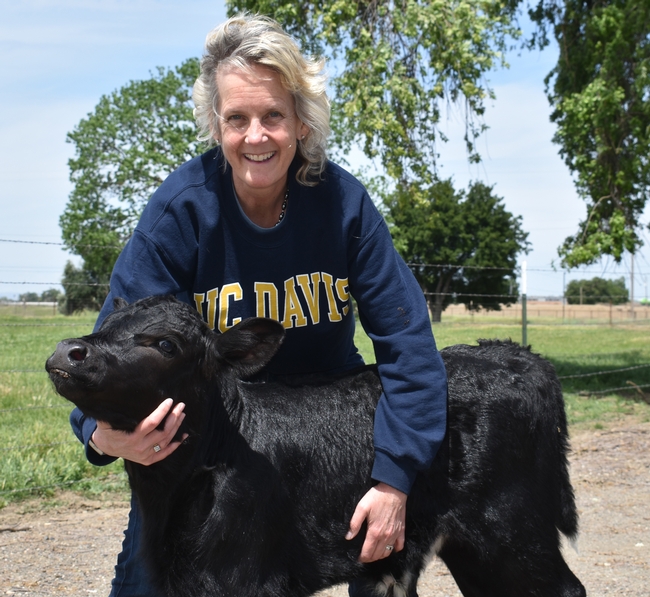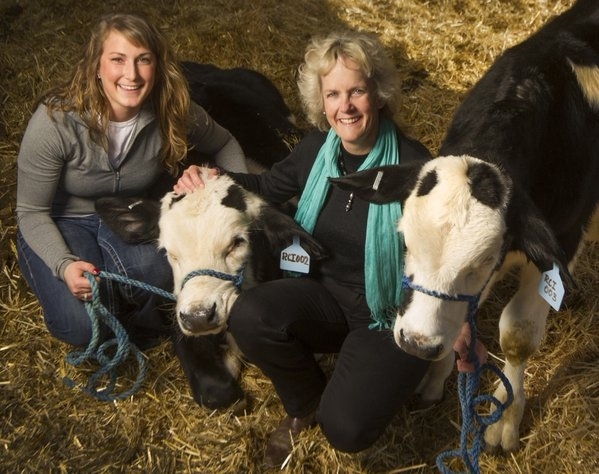Participate in a genome-editing webinar and survey April 17
The health and well-being of animals can be improved with genome-editing technology, but only if people trust and accept the methods.
“A number of breeding methods, including artificial insemination, embryo transfer, crossbreeding and, more recently, genomic selection, have been used to achieve livestock improvements,” said Alison Van Eenennaam, UC Cooperative Extension specialist in the UC Davis Department of Animal Science. “Now, genome editing promises to complement traditional breeding programs by precisely introducing desirable genetic variations into livestock breeding programs.”
Because horned animals can hurt each other or farmworkers, it is common practice to remove horns from dairy cows shortly after birth. In 2015, genome-editing technology was used by scientists at Minnesota-based Recombinetics to produce calves that don't grow horns.
Van Eenennaam and scientists at Washington State University and the University of Idaho are studying how interactions with social and traditional media, as well as in person, affect how consumers feel about changing the DNA of dairy cattle so the animals don't grow horns.
On Saturday, April 17, 2021, 11 a.m. to 12 noon (Pacific Daylight Time), members of the public are invited to attend a webinar about gene editing for animal welfare. To encourage participation, the first 200 registrants who complete an online survey before and after attending the webinar will receive a $5 Starbuck's gift card.
To participate in the research study, registrants must be at least 18 years old. Register at https://ucanr.edu/survey/survey.cfm?surveynumber=32839.
To analyze people's perceptions of gene editing for animal welfare, Van Eenennaam is partnering with Jill McCluskey, a WSU Regents Professor and economist leading the study, WSU philosophy professor Patricia Glazebook and Jason Winfree, an agricultural economist at the University of Idaho. The project is funded by a grant from the USDA's National Institute of Food and Agriculture.

